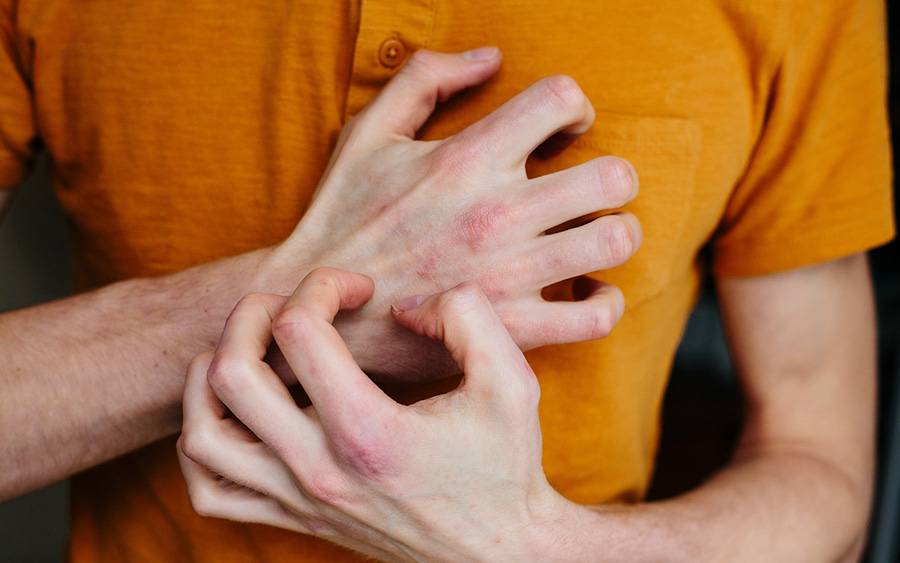Can Stress Cause Rashes?
Stress rash often affects people with underlying skin conditions

Stress rash often affects people with underlying skin conditions
Americans are among the most stressed people in the world, according to polls. While stress may be something we feel emotionally, it can have a significant impact on our physical health.
In addition to high blood pressure, headaches and fatigue, skin rashes are common stress symptoms.
What causes stress rash?
Stress rash often affects people who have underlying skin conditions, such as eczema, rosacea or allergies caused by environmental triggers, such as pollen, animal dander or certain foods. Some people even develop rashes from sunlight or weather changes. Still, even without an underlying condition, you can still develop stress rash.
“When you’re feeling stress, your body releases chemicals that can cause inflammation and make your skin even more sensitive,” says Erin Lester, MD, a family medicine physician at Scripps Coastal Medical Center in Solana Beach. “This can trigger a flare-up.”
What do stress rashes look like?
Stress rashes often appear as raised red bumps called hives. They can affect any part of the body, but often a stress rash is on the face, neck, chest or arms. Hives may range from tiny dots to large welts and may form in clusters. They may be itchy or cause a burning or tingling sensation.
Stress rash treatment
Stress rash is rarely a serious problem, but if you have difficulty breathing or your throat or lips swell up, call 911 immediately. Your reaction may be caused by something else that could be life-threatening, and you need emergency care.
Fortunately, most stress-induced rashes go away on their own within a few days; however, they can come back. Some may persist for as long as six weeks.
Avoid scratching the rash, which can make it worse and may even spread bacteria through tiny scrapes in the skin.
Home treatments, such as cool compresses and ice packs, can help relieve swelling and itching (but do not apply ice directly to the skin). Over-the-counter antihistamines, such as Benadryl and Zyrtec, can also help relieve symptoms. Read the labels carefully as some may cause drowsiness, or ask your pharmacist for a recommendation.
If your rash does not subside within a week, or your symptoms get worse, call your doctor. Depending on your provider, you may not need to make an office visit. Skin rashes often can be diagnosed during a video visit from your mobile phone or tablet.
“If your rash doesn’t respond to home treatment, we may prescribe a stronger antihistamine or a cortisone cream to knock down the inflammation and help your skin heal,” says Dr. Lester.
Preventing stress rash
Stress is simply the body’s reaction to a situation that feels overwhelming or creates anxiety. If you develop stress rash, it may be a warning sign that you need to reduce sources of stress in your life, whether they are related to your job, relationships, finances or other factors.
Even if you can’t change your situation, you can learn to manage how you react to stressful triggers. Once you have more control over stress in your life, you may experience fewer or milder rashes.
Try these tips to help manage stress:
- Exercise or practice yoga, tai chi or meditation.
- Seek out a friend for a walk or coffee.
- Do something fun with your family.
- Listen to music or read a book.
- Play an audiobook or podcast.
In some cases, what you think is a stress rash may actually be caused by something else, such as eczema or insect bites. Contact dermatitis, which is a rash caused by contact with something you are allergic to, such as a chemical or fabric, may be another possibility.
If you seem to get frequent stress rashes, it’s a good idea to see your doctor. Together, you can determine the cause and develop a plan to reduce your outbreaks.